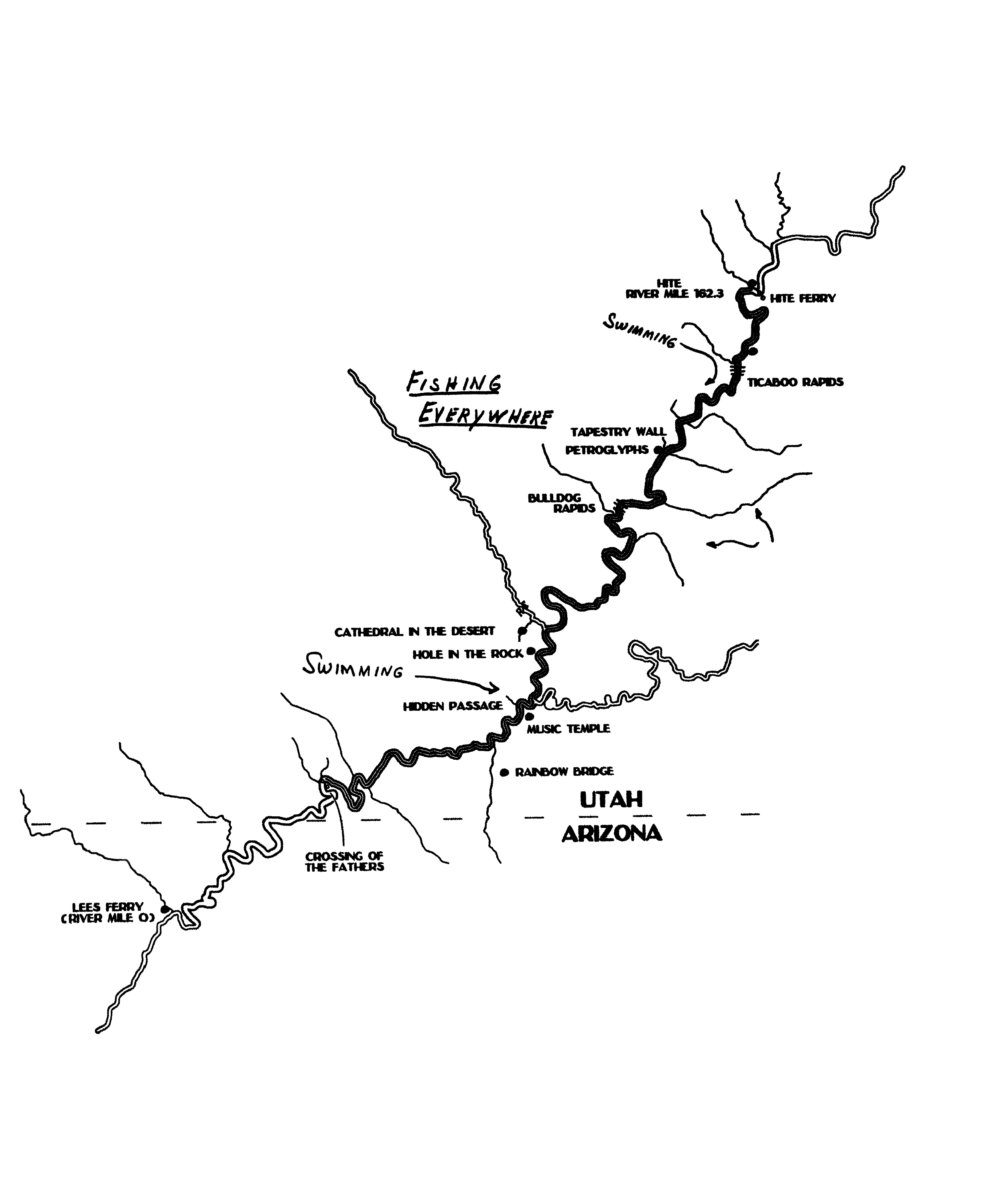Some information may be outdated.
Correction: A previous version of this story misspelled Martha Ham and Henry Aleson’s last names. We regret these errors.
When the Glen Canyon Dam went up in the 1960s, it flooded the Colorado River behind it, creating hydroelectric power and filling Lake Powell. But the dam also flooded Glen Canyon, meaning the legendary river trips taken by guides like Ken Sleight, Ron Smith and Bill Belknap, were over; and landscape features and historic archaeology sites were lost underwater.
In 2018, Sleight, Ryann Savino, and Martha Ham created the museum exhibit, “Glen Canyon: A River Guide Remembers,” to memorialize Sleight’s adventures down Glen Canyon before it flooded. This year, as water levels in Lake Powell dropped dangerously low, causing officials to consider overhauling the dam, the trio is bringing the exhibit back. It will be on display at the John Wesley Powell River History Museum in Green River from May 27 to June 2024.
“I met Ken [Sleight] in 1977 and heard about the profound experience he had in loving Glen Canyon and then losing it,” Ham said (Ham is the producer of the exhibit). “He says it’s something he cannot forget, and he maintains that at age 93. He’s been a role model for many of us—not just me—but many who have watched and listened to his environmental advocacy. He has never left Glen Canyon’s side.”
The exhibit maps what a seven-day river trip with Sleight in the 50s would have looked like. As visitors walk into the exhibit room, they’re first greeted with one of Sleight’s hand-drawn maps of Glen Canyon, pointing out rapids and landscape features—all now lost underwater. As visitors wander through, they can explore different themes through each day on the river—what certain miles held, what the Indigenous history of the area was like, the natural history of the area—plus photos and artifacts provided by Sleight, including a set of kitchenware he used during river trips.

The exhibit pays homage to other river runners of Glen Canyon too: day five highlights various guides, displaying two boats owned and operated by Dave Rust, who is considered one of the first outfitters in the region. Rust first started using the two boats in 1929. The team also pulled together historic audio clips, allowing visitors to listen to clips from people like Katie Lee, a folk singer and activist who was opposed to Glen Canyon Dam.
Along with artifacts is a plethora of photos. Savino, the exhibit’s curator, called the photos “hidden stories”—one of those stories is of Harry Aleson, a guide who was married in Glen Canyon. On display are photos of his wedding, the wedding invite, and one of Sleight’s hand-drawn maps, showing where he had to go to pick up the bishop.
As visitors round out the exhibit, they’re invited to remember that river trips “don’t really end—they stick with you,” Savino said. Here, the exhibit highlights people who have continued telling the stories of Glen Canyon, including painter Georgia O’Keeffe.
“Preserving stories is really important, and it’s tied to preserving wild places,” Savino said. “This is a really unique story of Glen Canyon: Ken and his friends taught me this story of Glen Canyon, and then I was able to recreate it in here. They’re some of the last river runners still around who knew it before the dam.”
Savino and Ham’s hope is that the exhibit adds to the conversation around Glen Canyon, they said: as Lake Powell and the Colorado River are discussed in national news, it’s important to remember the history of the area.
“The last message of our exhibit is to remember what was lost,” Ham said. “When Glen Canyon Dam came online, there was a turning point in the Western environmental movement … I’m hoping we can help people have an understanding about what’s happening with Glen Canyon now too.”
You can find more information at www.JohnWesleyPowell.com. Museum admission is $7 for adults; $6 for seniors and military members; $2 for children ages 5-12; and free for Green River residents.
Appreciate the coverage? Help keep local news alive.
Chip in to support the Moab Sun News.





